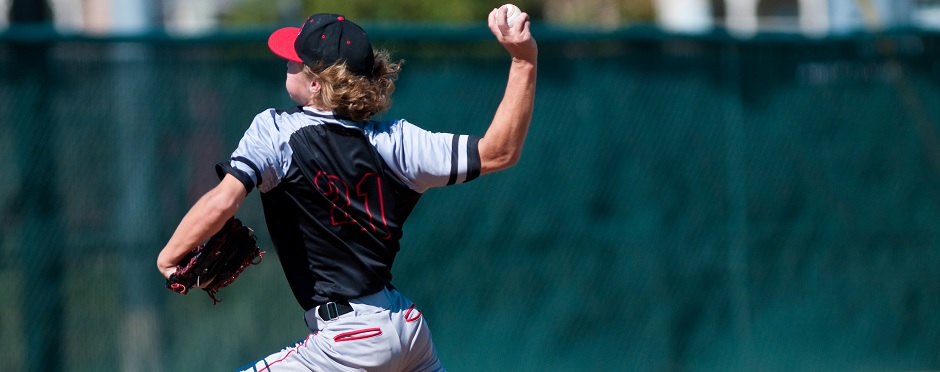
Common Spring Sports Overuse Injuries in High School Athletes
Leave a CommentContrary to what the snow on the ground has told you, spring sports are ramping up at the high school level across the states. And we all know what that means- beginning of season aches and pains. I’ll let you in on a little secret, we athletic trainers see a lot of the same injuries year after year at this time.
In the first few weeks of spring sports, there is a rise in visitors to the Athletic Training Room for overuse injuries. Let’s dig into some of the most common overuse injuries we see in spring and ways to prevent or manage them.
Common Overuse Injuries
Shin splints, or Medial Tibial Stress Syndrome, typically occur when a sudden increase in activity. With shin splints, your athlete will complain of soreness, tenderness, or pain along the inner side of the front of the shin bone, the tibia. This is caused by overuse of the muscle, which becomes inflamed, irritated, and pulls away from the shin bone. It is vital to have shin splints looked at as soon as possible, as they can be quite easy to manage when caught early. On the other hand, undiagnosed shin splints can lead to stress fractures in the shin bone. Athletic trainers have an arsenal of quick and effective rehab exercises to manage and prevent shin splints in your athlete.
Another very common lower body overuse injury we see a lot of is patellar tendonitis, sometimes called Jumpers Knee. Your patellar tendon connects your kneecap to your shinbone and is involved with extending your knee to run, kick and jump. During the beginning stages, athletes will complain of pain under their kneecap, usually during their training. As the tendonitis worsens, the pain will start to be present throughout their practice and eventually will interfere with normal daily living activities. Your athletic trainer or physical therapist will assist with stretching and strengthening the knee muscles to take the stress off the patellar tendon. Rest and ice are also vital components in healing any overuse injury.
Your rotator cuff is four muscles (supraspinatus, infraspinatus, teres minor, and subscapularis) that stabilize the shoulder in addition to helping with elevation and rotation of the arm. Rotator cuff tendonitis is a common overuse injury seen in athletes who make many overhead motions, such as baseball pitchers, tennis and volleyball players. The most common symptoms of rotator cuff tendonitis are pain (worsened with overhead activity), weakness, and clicking or popping. It is important to connect with your athletes’ athletic training staff if you suspect your child may have a rotator cuff injury. Many exercises can be done with the athletic trainers or at home to strengthen the muscles that make up the rotator cuff to absolve rotator cuff tendonitis. As always, the earlier it is caught, often the easier it is to manage.
How to Prevent Overuse Injuries
With all this talk of injuries, you may be asking – How can we avoid or prevent these injuries from showing up from the get-go? There are many ways to prevent overuse injuries, but most importantly, there should be a gradual return to the season. Injuries are more likely to occur with a sudden increase and frequency of activity. It is extremely important to begin to “warm-up” to your season, especially if your athlete has been sedentary before the beginning of the season. Starting 4-6 weeks before the season begins, your athlete should begin to do basic sport-specific and cross-training type exercises. This will help build strength and stamina to go into a season that starts at full force. Adequate recovery time is also another important component to avoiding overuse injuries. It is vital to listen to your body and what it tells you. The phrase “no pain, no gain” has gotten many athletes unnecessarily injured throughout the years. Warming up and cooling down during practices help both acute and chronic injuries by making sure your muscles are ready for the demand being placed on them. And as mentioned a few times already, the key to success is early detection. When something just isn’t feeling right, or a nagging pain that won’t go away, your athletes’ athletic trainer is the first line of defense in prevention, management, or directing you and your athlete to the proper medical professional.
Learn More
If you have further questions about injuries, your athletes’ Athletic Trainer will be more than happy to discuss anything more in-depth. You can also always reach out to your local Athletico Physical Therapy clinic for a free assessment with a physical therapist. Free Assessments are available in-clinic and virtually through our Telehealth platform.
The Athletico blog is an educational resource written by Athletico employees. Athletico bloggers are licensed professionals who abide by the code of ethics outlined by their respective professional associations. The content published in blog posts represents the opinion of the individual author based on their expertise and experience. The content provided in this blog is for informational purposes only, does not constitute medical advice and should not be relied on for making personal health decisions.
